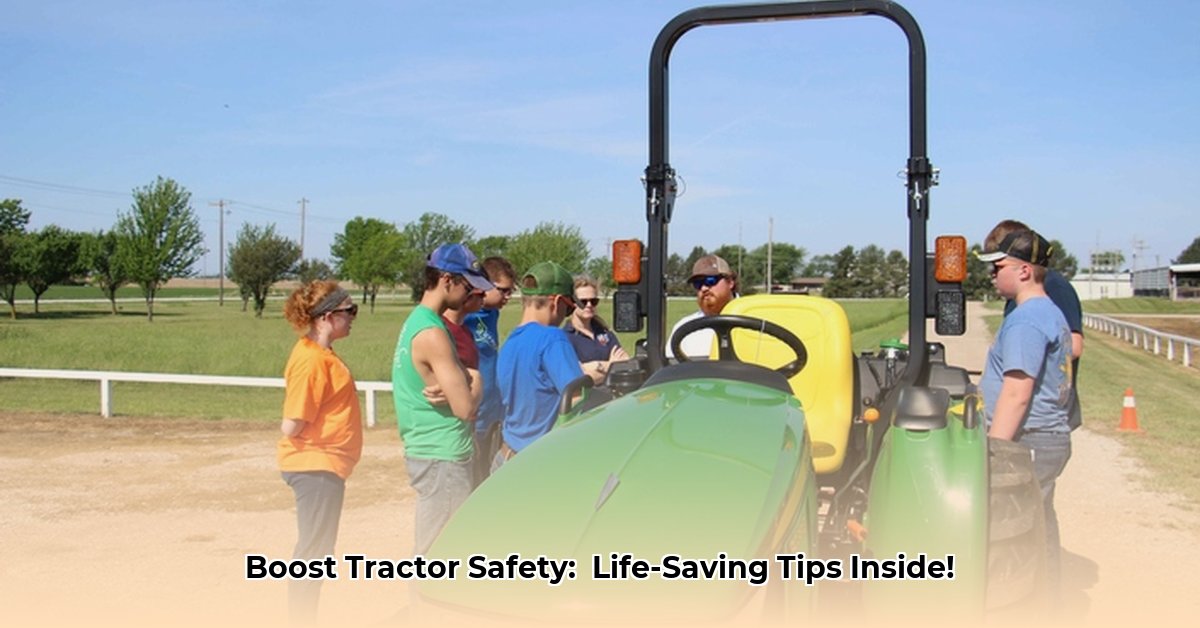
Tractor rollovers are a leading cause of serious injury and death on farms. Investing in a Rollover Protective Structure (ROPS) and canopy is a crucial step in protecting yourself and your livelihood. This guide provides a comprehensive overview of ROPS and canopies, from selection and installation to maintenance and regulatory compliance, empowering you to make an informed decision that prioritizes your safety and farm's productivity. For used tractor valuations, check out this helpful resource: Used Tractor Values.
Understanding ROPS and Canopies: Your Tractor's Safety Net
A ROPS (Rollover Protective Structure) is a sturdy framework designed to protect the tractor operator in the event of a rollover. A canopy provides additional overhead protection from the sun, rain, and falling debris. Together, they form a vital safety system. ROPS designs vary widely, from simple roll bars to more complex, fully enclosed structures, with materials ranging from steel to other durable alloys. The design and material directly influence both cost and effectiveness.
(Insert image gallery here showing various ROPS and canopy designs, highlighting differences in structure and materials.)
The Critical Benefits of ROPS and Canopies: Safety and Efficiency
The primary benefit of ROPS is the dramatic reduction in serious injury and fatality risk associated with tractor rollovers. Studies consistently show a significant decrease in severe injuries when ROPS are properly installed and maintained. Beyond safety, ROPS can also enhance efficiency. Certain tractor models can accommodate larger hopper capacities with ROPS installed, leading to increased productivity and reduced workload. Canopies offer additional comfort and protection from the elements, allowing for more extended work hours in variable weather conditions. How much more efficient can you be with additional operator comfort?
Choosing the Right ROPS and Canopy: A Personalized Approach
Selecting the appropriate ROPS and canopy involves careful consideration of several key factors:
- Tractor Compatibility: Ensure the ROPS is designed for your specific tractor model. Incorrect fitment compromises safety.
- Farming Operation: The type of farming (e.g., vineyards, large-scale agriculture) influences the needed ROPS design and robustness.
- Budget: ROPS and canopy prices vary widely based on design, materials, and complexity.
- Durability and Maintenance: Choose durable materials with straightforward maintenance requirements to minimize downtime and repair costs.
Installation and Maintenance: Ensuring Long-Term Protection
Professional installation of your ROPS is strongly recommended to guarantee proper functionality and maximize safety. Improper installation can severely compromise the ROPS' effectiveness. Regular maintenance checks are essential for optimal performance. Inspect for signs of wear, including rust, loose bolts, or cracks. Addressing minor issues promptly prevents more significant and costly problems down the line. Think of your ROPS like the engine of your tractor--regular maintenance is essential for optimal performance and longevity.
Regulatory Compliance: Meeting Legal Standards
Safety regulations for agricultural equipment, including ROPS, vary by region. It’s critical to comply with all applicable local, state, and national standards. Failure to do so can result in fines and insurance complications. Consult your local agricultural safety authority for specific regulations in your area. Below is a sample regional compliance guide; however, always check directly with your local authorities for the most accurate and up-to-date information.
| Region | Key Regulations | Contact Information |
|---|---|---|
| North America | Consult OSHA and your state's Department of Agriculture | [Link to State Department of Agriculture Website] |
| European Union | Varies by country; check national safety standards. | [Link to European Commission Website] |
| Australia | Check with the relevant state/territory authority. | [Link to Australian Government Website] |
| Other Regions | Research your local agricultural safety agency. |
The Cost-Benefit Analysis: A Long-Term Investment
While the initial cost of a ROPS and canopy might seem substantial, the long-term benefits dramatically outweigh the investment. The potential savings from reduced medical expenses, insurance premium discounts, and increased operational efficiency make ROPS and canopies a fiscally sound decision. Isn’t your safety and ongoing productivity worth the investment?
Conclusion: Prioritize Your Safety Today
Investing in a ROPS and canopy is an investment in your future. It's a crucial step in mitigating risks, enhancing productivity, and creating a safer working environment. Contact your local agricultural equipment dealer or safety regulatory agency for more detailed information specific to your needs and location. Remember, your safety and well-being are paramount.